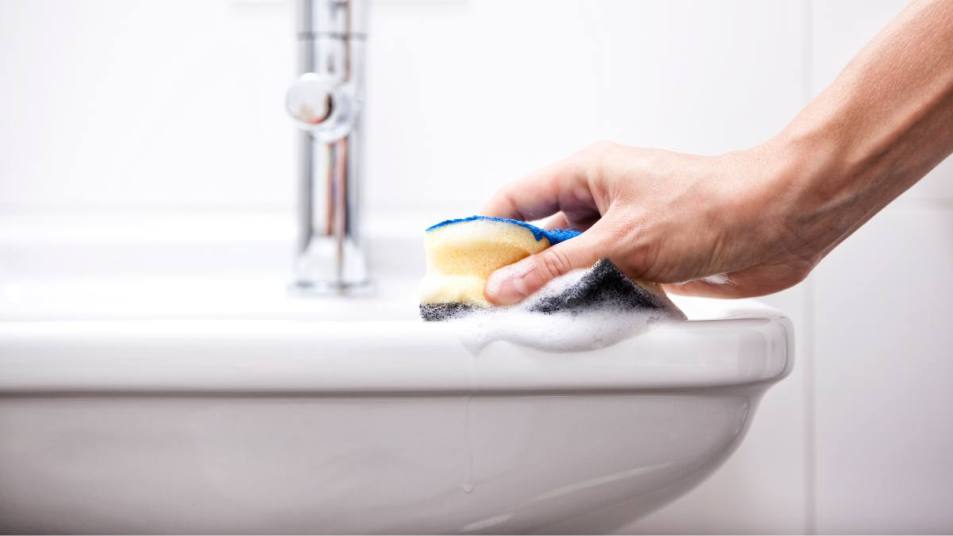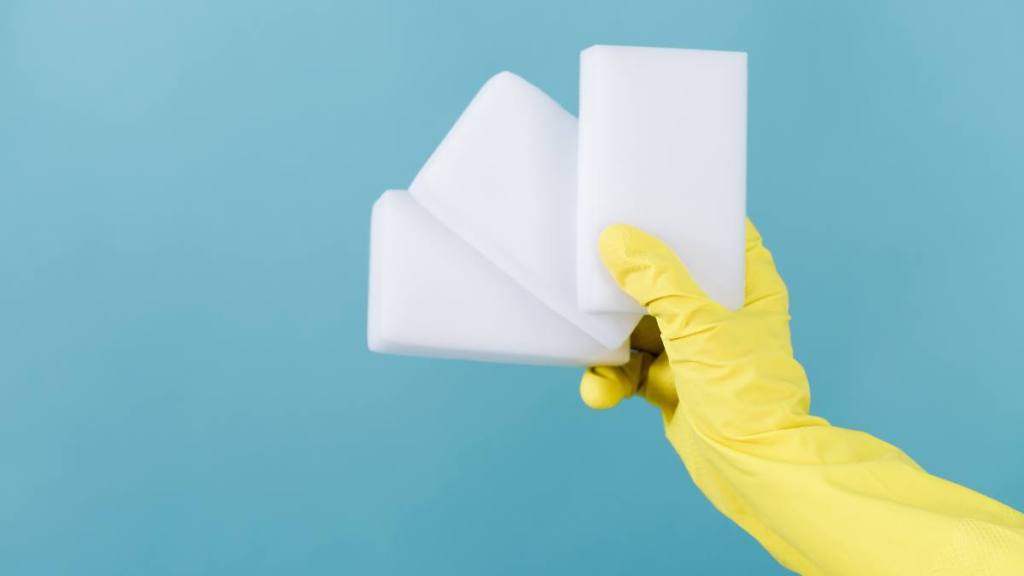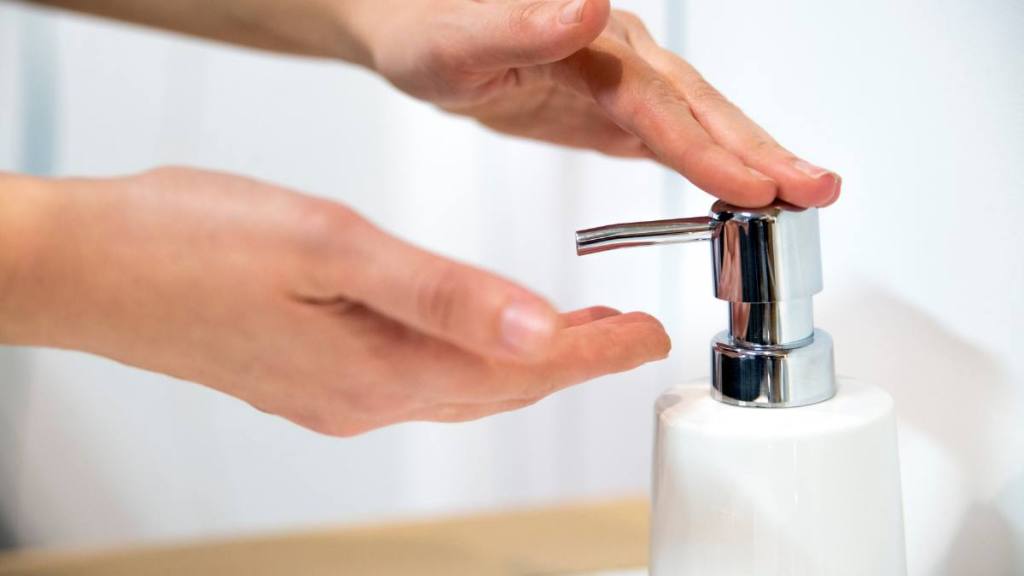How to Get Soap Scum Off of Anything: Experts’ Genius Solutions
Plus, the viral parchment paper trick that really works!

The scourge of showers and bathtubs alike, soap scum doesn’t get its name by being a beloved addition to bathroom fixtures. That’s why we asked cleaning experts how to remove soap scum from anything and everything. Here, the top methods they swear by for quickly eliminating the stuff — and keeping it gone for good!
What exactly is soap scum?
That whitish or grey film that seems to stick to your shower walls, tub, fixtures and even your shower curtain is a result of residue left behind from, yes, soap. “More specifically it consists of the fats from your soap and body oils, which cling to calcium stearate, magnesium stearate and other alkaline metals that can be found in tap water,” explains Laura Christian, owner of All Star Cleaning Services of Fort Collins, Colorado. “This coats the surface of your bath after you shower, leaving that telltale residue behind.”
It’s also good to note, if you keep finding a white, crusty buildup on your coffeepot, tea kettle or faucets, this is often referred to as limescale, and it is essentially the same thing: a buildup of calcium and magnesium, which are found in your drinking water.
Why is soap scum so difficult to remove?
The combination of minerals, oils and dirt found in soap scum form a fairly impenetrable film on whatever surface it settles on if allowed to dry there. “And once it’s settled in place, it typically takes an acidic cleanser to penetrate and remove it,” says Christian.
“Not tackling soap scum regularly can lead to permanently stained surfaces, mold and mildew growth and damage that cleaning won’t repair,” says Betty Ferguson, owner of Cleaning Zoom. “How often you should be scrubbing your shower can vary based on multiple factors such as the hardness of your water, frequency of shower use and the type of soap you use, but generally, it isn’t recommended to go longer than 2 to 4 weeks.”
How to remove soap scum
From fiberglass
“To clean scum off this surface, all you need is a mixture of equal parts white vinegar and water, mixed together in a spray bottle,” says Will Cotter of HappyCleans. “Spray it generously and let it sit for 10-15 minutes so the acids in the vinegar can break down the scum. Then, scrub it with a sponge or soft brush and rinse thoroughly with water.”
From tile

“I love using Magic Eraser on these surfaces — they really are ‘magic’!” says Sara “The Cleaning Lady” San Angelo, owner of Confessions of a Cleaning Lady. “Just wet the sponge and wipe over the scummy surface. It’s especially good at cleaning grout, which can normally present the biggest challenge for cleaning tile. Once the scum is gone, simply rinse and dry the surface.”
From metal fixtures
Metal often takes a bit of scrubbing action to truly get soap scum gone for good. “I like to add lemon juice to baking soda until a paste forms, then apply it to fixtures using a sponge or cloth,” says Cotter. “Let it work its magic for a few minutes, then scrub away and rinse.”
You can also try the viral TikTok trend of using balled-up parchment paper as a scrubber to remove soap scum and water marks from metal fixtures — check out how it works here:
@the_mummy_blogger New day new hack!! #bakingpaperhack #stainlesssteelhack #cleaninghack #cleaning #clean #showerclean #showerhack #mumhack #cleantok #cleanfreshhype #cleanwithme #fyp #foryou #foryoupage #viralhack #hackqueen #mummyblogger
♬ another one bites the WAM – veggibeats
From stone
Natural stone is made from minerals, and minerals and acids don’t mix — that’s why ingredients like vinegar help remove soap scum. “Here, prevention is the key,” says Christian. “You can apply a sealer to your natural stone that gives it a protective layer that can stand up to acids — that way you can clean them without damaging the stone surface.” Two to try: Stonetech Stone, Tile & Grout Sealer or Miracle Clear Natural Stone Sealer and Finish. You can watch a step-by-step of how this works here:
How to prevent soap scum from forming
Even easier than cleaning soap scum is not letting it build up in the first place. Some options to try:
Employ a daily DIY shower spray
Give your shower a spritz with this DIY formula each time you’re done showering, and soap scum buildup will become a thing of the past, ensures Ryan Knoll of Tidy Casa. “Use the same product you do to clean — mix equal parts white vinegar and water — and spray it on your shower surfaces after each time you use it. You could also do water and rubbing alcohol for the same effect. Both break apart the fats that help form soap scum.”
Dry off the walls
After using the shower, simply dry off the walls using a towel or squeegee — this will remove both moisture and soap residue, so scum doesn’t have a chance to take hold.
Choose these soaps

Liquid soaps, like shower gel or body wash, are technically not “soaps” at all, but detergents/surfactants. They do not contain the fatty acids used to make soap, and it’s those fatty acids that cling to minerals in water and form scum. “Glycerin-based soap also doesn’t contain the fats found in regular bar soap, and actually softens scum and makes it easier to remove,” adds Cotter.
Consider a water softener
Because soap scum is formed via a chemical reaction with calcium and magnesium, the “harder” your water is — i.e., the more minerals it contains — the worse your soap scum problem will be. While installing a water softener system in your home (it filters out those minerals) can be pricey, it can save you more than just scrubbing your bathroom from soap scum. Over time, hard water can also damage your plumbing system, water heater and even your HVAC if you use a water-based heating system like radiators. So it could be worth considering if you’re dealing with frequent soap scum and limescale buildup, which are common indicators you have a hard water issue.
For more bathroom cleaning tips, click through the links below!
These Kitchen Staples Will Unclog a Bathtub Drain Quickly Without Harsh Chemicals

















